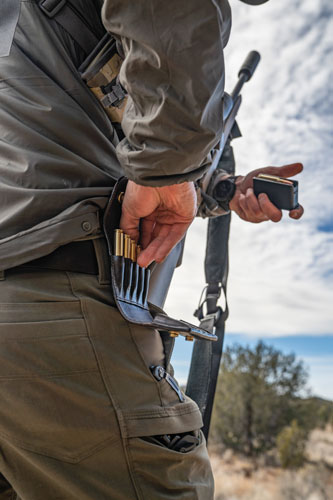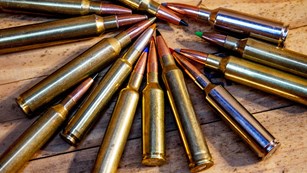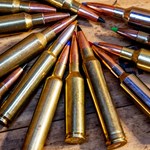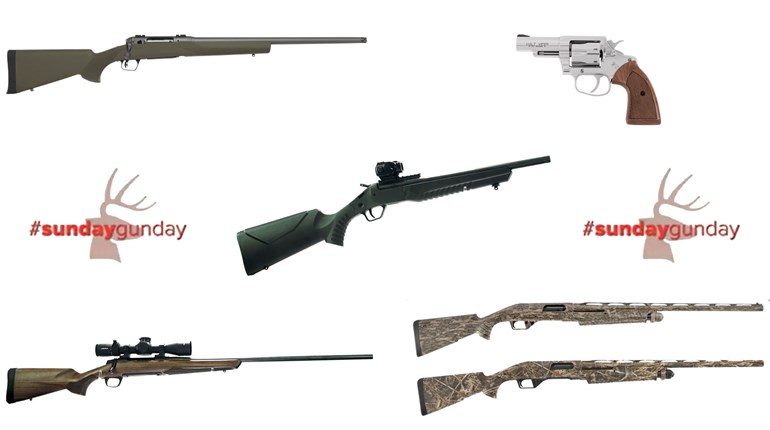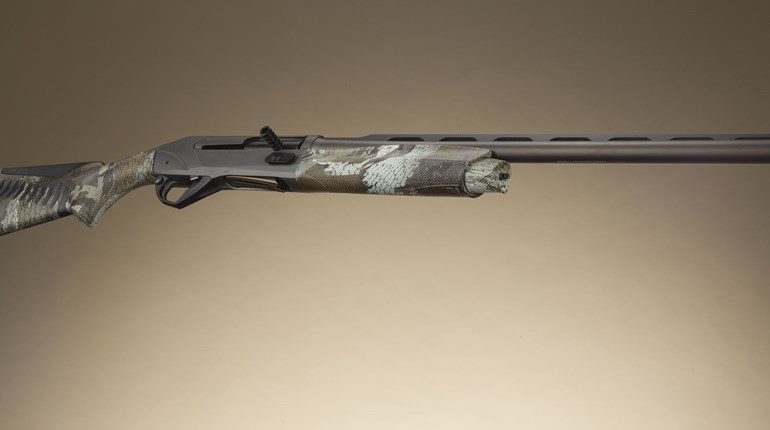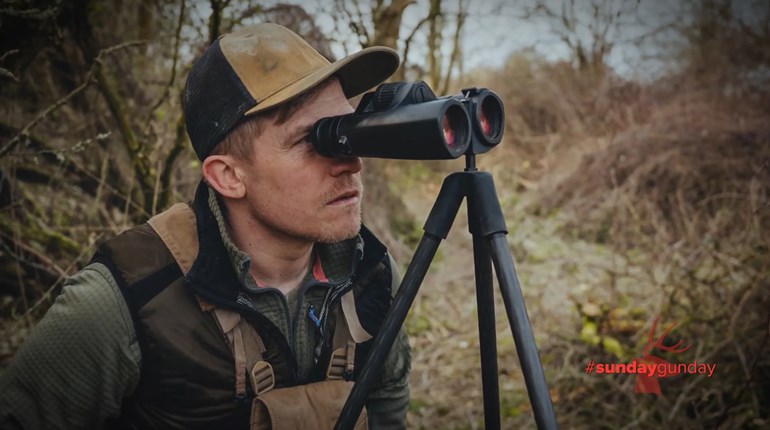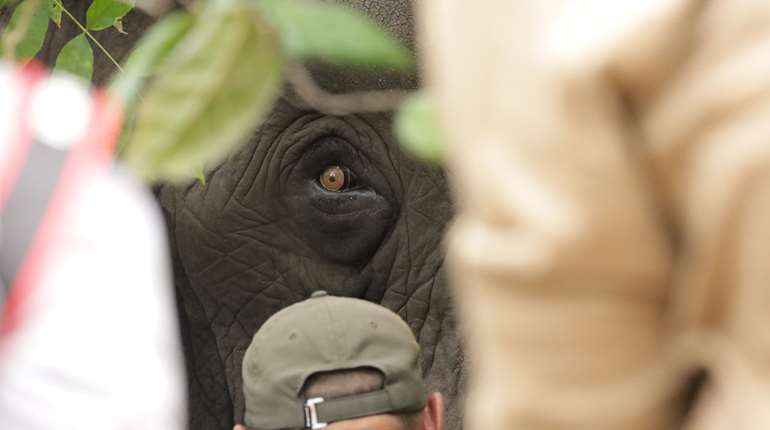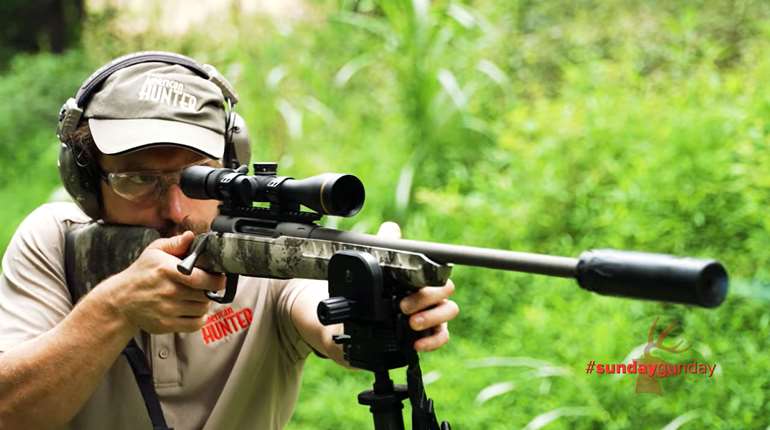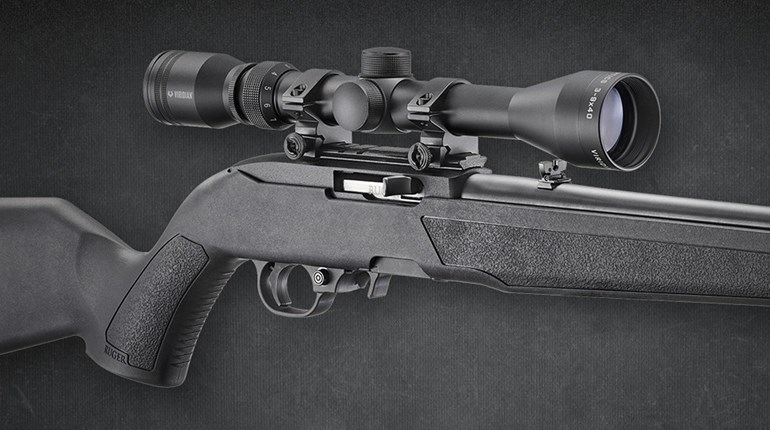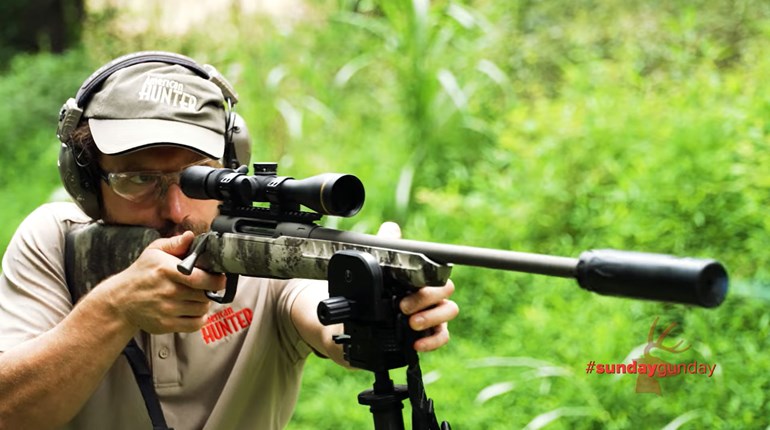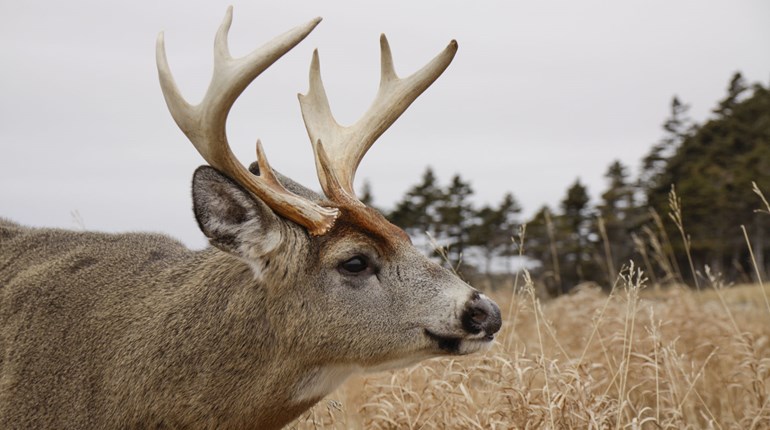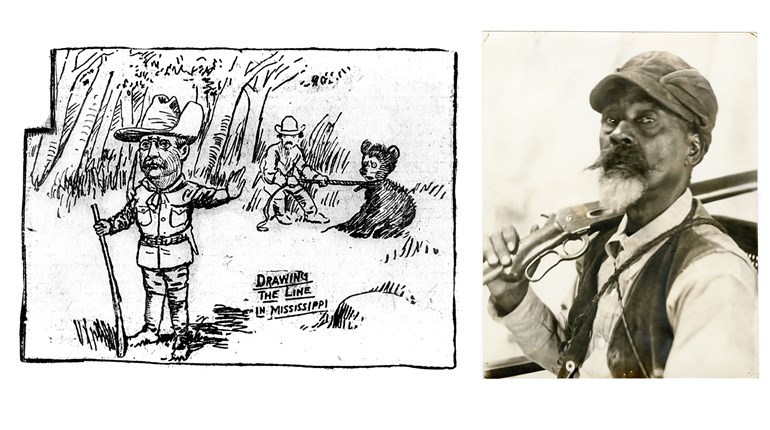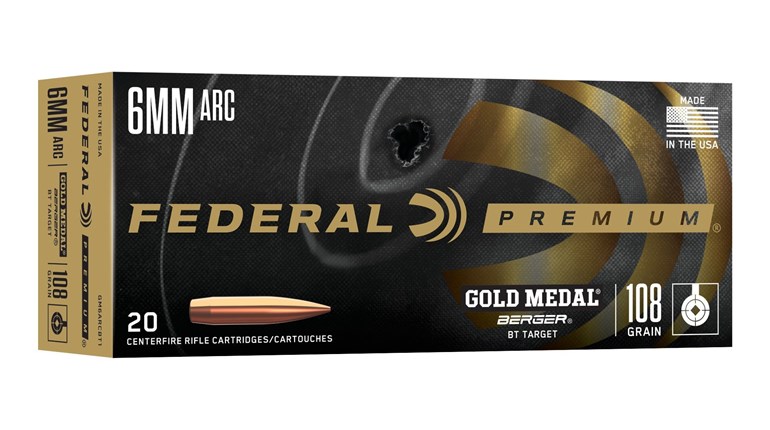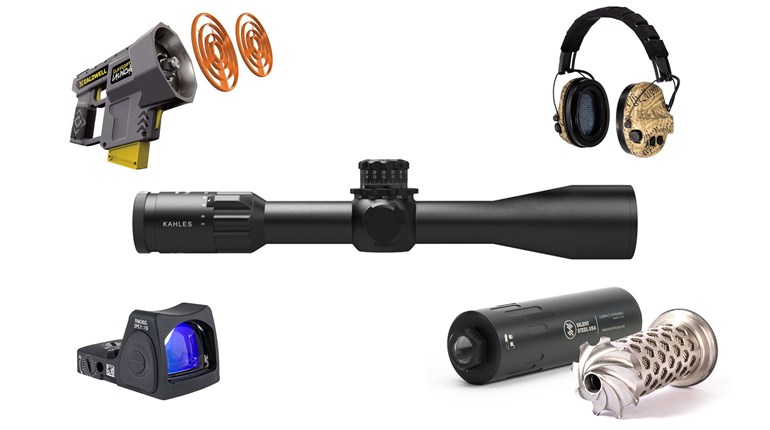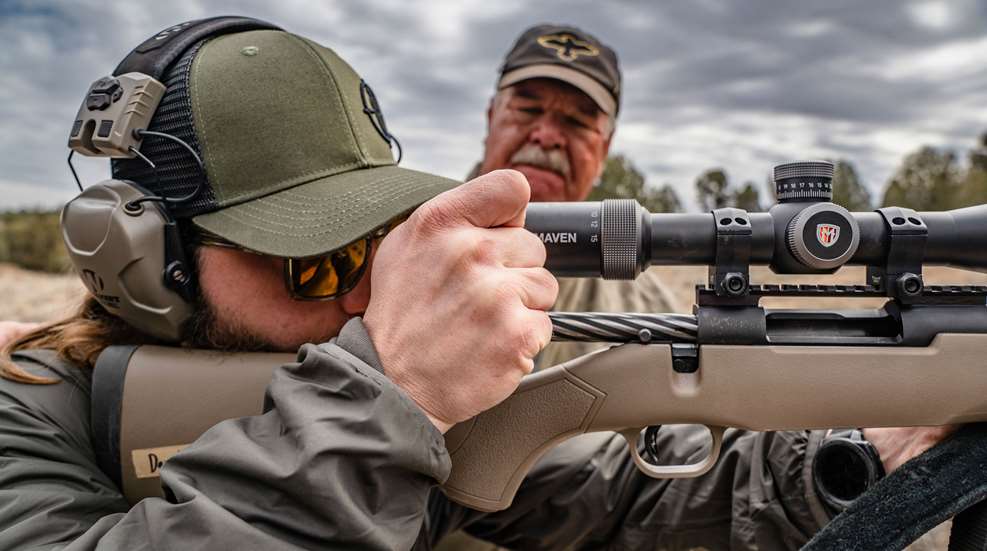
The rain washed over the landscape, contrasting with the setting sun in an odd chiaroscuro of colors I’d never seen before. As the chilly drops pattered an irregular staccato on my skin, I lost myself not only in the sheer magnificence of the moment but in its oddity. I may have grown up hunting the hills outside my rural Virginia town, but never for a second did I imagine that would someday translate to surveying the scrubby savanna of South Africa’s Northern Cape. As I eased back down onto the Series 70 Land Cruiser jostling us towards camp, I pored over the series of events that had led me here. Oddly enough, the adventure had started in Chino Valley, Ariz., where longtime Africa afficionado Richard Mann sought to prove this was the perfect, accessible hunting experience. I had my doubts at the outset, but my mental tide was beginning to turn.

Safari Prep
Those who’ve made the pilgrimage to Col. Cooper’s compound will recognize the significance of the town above. For those who don’t, Chino Valley is home to the widely venerated Gunsite Academy, staffed with some of the best firearm instructors and most practical training courses in the world. While they’re known far and wide for defensive pistol and carbine courses, the center also has a number of offerings for those looking to learn a variety of other shooting skills, from long-distance precision to hunting. This week, they had revised the latter course to focus on the needs and situations encountered on an Africa safari (the five-day course is now a permanent fixture). As every one of us in the course was a first-timer to the savanna, the experience proved to be as necessary as it was fascinating. gunsite.com
The Gear
Of course no class can begin without the requisite equipment. Of the two old, conflicting adages about laborers and their skills, I have to agree that a good workman really is only as good as his tools—so it is with shooters. While it’s true in this modern era that most guns have the potential to outshoot their owners, no amount of skill can compensate for a mercurial scope or a misfiring rifle. And that’s only the tip of the iceberg. Here at Gunsite, we were about to get a rundown on the what, when and why of necessary gear for Africa.

Rifle and Suppressor: While we ended up in the Northern Cape province through a tangle of events too banal to recount, we were initially prepping for a safari in the dense Limpopo. A tangle of trees and brushy scrub, the Limpopo necessitates a fast-handling rifle also capable of reaching out past 300 yards when the situation requires. For the job, there are few rifles better suited than the short, 16.17-inch-barreled Patriot from Mossberg. Chambered in .308 Winchester, the rifle sports an overall length of just 36.5 inches with a length of pull just under 14 inches, even with a thick, soft-rubber recoil pad that compresses quite a bit when pulled into the shoulder. This gives the gun incredible handling characteristics, and makes it capable of pulling onto a target with blazing, balanced rapidity, even with a 5.5-inch Silencer Central Banish Backcountry affixed to its muzzle. As it happens, while the Northern Cape lacks the Limpopo’s density, the rifle was equally well-suited to the scrubby terrain. mossberg.com; silencercentral.com
Riflescope: For this hunt, I actually used two scopes. I started with the Maven RS1.2 during our prep course, but switched to the Maven RS.2 for our hunt. Both are fantastic pieces of glass, though with widely disparate applications.
The RS1.2, with its 2.5-15X magnification, 44mm objective lens, first focal plane reticle and ballistic turrets is an excellent optic for dialed, cross-canyon shots and Western hunting in general. It is hands-down the optic I would reach for if I was headed to a mountain muley hunt. The RS.2, on the other hand, is a lightweight optic with 2-10X magnification and a smaller, 38mm objective lens. Equipped with the second focal plane SHR reticle, which comes with 5-, 10- and 20-MOA holds for elevation and windage, this is the perfect riflescope for quick shots and holds when you know you’re not going past 350 yards and may need to rapidly engage something at 20. After this course was over, I quickly realized the latter was the right call for Africa, a choice which would bear far more importance than I realized at the time. mavenbuilt.com

A Mossberg Patriot in .308 with a 16.17-inch barrel was fast-handling even with a 5.5-inch-long Banish Backcountry suppressor attached. A variety of 155-grain monolithic offerings from LeHigh Defense were perfect to keep the carbine-length bolt gun shooting flat.
Ammo: Ammunition is potentially the most crucial component to be selected for an African safari. Though it needs to be accurate, dime splitting precision is actually not the most important factor. African game has a reputation for being intensely tough, so bullet terminal performance is key. After combing through some different designs and grain weights from LeHigh Defense, I settled on .308-caliber 155-grain TME (Tipped Maximum Expansion) as the best balance of traits. Its 155-grain weight was perfect to keep it shooting flat from the carbine-length barrel, while its monolithic, solid-copper design boasted 99 percent weight retention with a 50 percent expansion rate. Translation? Something I could put on target in a hurry without figuring too much drop or wind; a bullet that would produce intense devastation when it gets there. lehighdefense.com
Sticks and Sling: You can’t hit much if your crosshairs aren’t steady, and they never will be if your rifle is unstable. Ensuring a solid bone-to-bone connection is important, but even that is only half the battle. Without the knowledge of how to use a rest, the muzzle will still wobble too much for quality accuracy anywhere outside 100 yards. Unlike most stateside environs, the African scrub usually is too tall for kneeling or seated shots, much less the prone position. As such, nearly every shot is taken standing off three-legged shooting sticks, and it’s a good idea to get accustomed to them.
What we intended to take to Africa, however, was somewhat different. Spartan Precision Equipment manufactures a whole line of ultralight bipods, tripods and quad sticks for hunting, which all rapidly attach and detach using the same quick and secure magnetic connection system. We planned to take short and tall bipods along with us—just in case—but were mostly relying on the company’s tall Springbok quad sticks to make accurate shots over the tall grasses. This unique rest is lightweight, unfolds easily and provides support to both the fore-end and buttstock of the rifle. javelinbipod.com
While these already provided a great deal of stability over offhand shooting, Gunsite instructors (and Richard Mann) were unwilling to let us go afield with only one method of support. Richard partnered some time ago with Galco to create a sling that is used not only to carry the rifle but to shoot it. The RifleMann sling is an updated and far better adjustable version of the old Rhodesian, allowing for even more support styles. We went over not only how to get into hasty, safari, traditional and triceps support positions but also how to marry these traditionally offhand concepts with the use of bipods, quad sticks and other shooting sticks. The results were uncanny, yielding a whole new level of confidence for standing while shooting. galcogunleather.com
Accessories: Aside from the key pieces of kit above, we also took advantage of a belt-mounted ammunition carrier from Galco, footwear from Meindl, eyewear from WileyX and safari clothing from 5.11 Tactical. This article wouldn’t fit into a magazine if I detailed each item in full, but the ways in which these pieces of kit improved our hunt will come to light throughout this and the following article. meindlusa.com; wileyx.com

The Training
As already has been touched upon, the hallmark of the African plains is the fast, standing shot. With the omnipresence of high brush, shots tend to be taken off shooting sticks at ranges from 40 to 350 yards. This means that not only do you need to get on target quickly, you need to be pretty dang stable to send lead accurately at those ranges. As a born whitetail chaser and converted mountain hunter for whom measured, well-rested shooting is the norm, my skill set was going to need a drastic rethink. Indeed, I’ve sent far more standing lead from an AR-15 than I ever have from a bolt gun, and almost none of it off shooting sticks. Task No. 1, then, was finding a stable position while on my feet.
Of course, that doesn’t necessarily mean jumping straight to rested shooting. There’s a lot about shooting a gun accurately offhand (albeit at closer ranges) that translates across all styles of shooting. At Gunsite, this means that at first the instructors wanted to watch us shoot (then correct our shooting) from standing, seated and prone positions. While it can sometimes be hard to isolate the most important thing you learn in a training course, this time it was obvious. There was one detail every training course I have ever attended has overlooked, which translated to direct success during my safari: snap-shooting.

A great benefit of Gunsite’s high instructor-to-student ratio is steady and intense oversight that is personalized as needed throughout the week.
Standing: I have always lived by the common mantra to “get down on the gun.” I tuck down my neck, lock my cheekbone into the same, familiar place on the comb, wait for my respiratory pause and squeeze the shot home. So, on the firing line, when my shots started occurring almost seconds behind those of my peers, I was baffled. How on earth were they managing to get down on the gun so quickly? It was here that I learned a core tenet of true snap-shooting.
Instructor Gary Smith was the first to notice my trouble. After a few repetitions of painfully slow though on-target shots, he took me aside and showed me my error. Rather than shouldering the rifle, bringing my head to the crosshairs, lining up and squeezing the trigger, what I needed to do was bring the rifle to my eye, connect the stock with my check then slide the stock back to wherever it touched my shoulder or collarbone (for me it was the latter) and send the shot home. This sped up my times remarkably (and highlighted the luxury of having a rifle properly fitted to the length of your neck). Not taking the extra time to drop my head down and realign with my target, and instead maintaining focus on the target and bringing my crosshairs up to it, eliminated an entire step in my process. Soon, my shots were firing at the same speed as my peers’, without sacrificing accuracy.
Slinging Up: Next, we backed out a number of yards and practiced a more measured standing shot. Utilizing the RifleMann sling, we tried slinging our front arm to better stabilize the rifle, keeping our shots well within any vital area. Being a longtime user of Rhodesian-style slings, this was familiar to me. What was not so familiar was the next step. If one loosens it slightly, the RifleMann sling’s pliable nature allows its users to sling up either their front arm or their rear arm. Not only was this an even more stable platform (albeit slower to achieve), it was so stable we were later able to take one-handed 300-yard standing shots on steel gongs without issue. While I wouldn’t recommend anyone try such a thing on a live target, it was an incredible testament to the utility of the sling.

Seated: From standing, we progressed to the seated position. With a smooth, leg-crossing motion familiar to anyone who played high school football, shooters can quickly plop themselves into a cross-legged position while slinging front or rear at the same time. At this point, with the front elbow on the front leg and the rear elbow on the back leg, a shooter can rapidly achieve remarkable accuracy out to ranges usually reserved only for prone or supported shooting. For those a little less flexible, legs can remain uncrossed with similar results, though personally I preferred to remain cross-legged.
Prone: Finally, we got down into the prone position. Easily clicking our Spartan Precision bipods into their magnetic MagnaSwitch mounts, we all were immediately relieved to feel the exceptional stability provided by the platform, and its solid connection with the earth. This was more standard fare for all of us and required less correction, beyond the usual tweaks of getting more behind the gun, and striving to keep legs flat, with toes out and heels flush with the ground.
Shooting Sticks: Basics covered with the rifle on its own, we moved to the most important shot to know for Africa: shooting off sticks. For this practice, we would use not only the Spartan quad sticks but also the standard tri-stick setup common to African professional hunters (PHs). By drilling to rapidly place, steady, aim and fire the Mossberg off these sticks, we were able to play with slinging the rifle front and rear, to determine what provided the most stable hold for each of us. While the traditional sticks were a little quicker to get on to, the precision afforded by Spartan’s quad sticks—which lock into the front of the rifle while simultaneously supporting the buttstock—was hard to beat. Several days of training in, we were finally ready for some real-world scenarios.
Scenario-Based Training: Hitting paper and steel on the range is crucial. It allows shooters to drill fundamentals and tweak their form in a way that builds both skill and confidence. That said, part of what makes hunting difficult is the adrenaline dump many folks experience when their quarry finally shows itself; you can double that for dangerous game. As a result, in addition to running students through one of their standard simulators—in which a series of targets must be engaged at unknown distances from a variety of shooting positions, sometimes using improvised rests—Gunsite set up a safari walk to close out our training.
The premise is simple. Walking to the rear of your instructor, who assumes the role of PH for this training and carries your shooting sticks, realistic African animal targets pop out through the scrubby Arizona brush (which looks remarkably similar to the African savanna). As they come into sight, your “PH” calls them out, at which point you must assume whatever position you think best for the distance and get rounds on target. The catch? The safari walk is timed, and you’re in competition with the rest of your class. This is what turns on the adrenaline to better simulate an actual hunt. There may be no real substitute for hair in the scope, but a timer and some friendly rivalry is about as close as it gets.
In the hope that readers will end up taking this course themselves someday, I won’t give away any secrets, but I will tell you that dangerous game factors in and you may have to accomplish a speedy reload. This is where the importance of keeping a few spare rounds on your belt (or potentially a full spare magazine) becomes quite crucial. Fumbling for spare ammo in your pocket, or even a loose box magazine, is a non-starter. Personally, I left the safari walk realizing I needed to add top-loading to my at-home bolt-action practice, more thankful than ever that I now had a Galco ammo carrier to rely on.
The Hunt Begins
A hard squeeze of the Land Cruiser brakes jolted me out of my Arizona reverie, still somewhat dazed to find I was a hemisphere away from home. The hunt would begin tomorrow, and it was nearly time to see if the training at Gunsite would pay off. To find out, check back here next month.

Spartan Precision Stability
While we touched on it a bit above, Spartan Precision’s particular approach to stabilizing a rifle deserves a little more consideration. Designed around a unique attachment system, Spartan’s standard-size Javelin Pro Hunt Tac bipod, tall SpringBok bipod and SpringBok Quad Sticks all click into the same, 12mm MagnaSwitch attachment port for instant stability. These magnetic attachment ports can be affixed to a rifle in a number of ways: via MLOK; Picatinny rail; old-fashioned sling swivels; or even via permanent adapters inset into the fore-end. The principle behind the system is simple. Rather than limiting yourself to a single size of bipod—heavy and constantly affixed to the end of the rifle—several can be carried and clicked in whenever necessary. Crafted from carbon fiber, silicon and aluminum, all these accessories are as stiff as they are light, the JavelinHunt Tac Pro (7.6-8.3 ounces, depending on configuration) being easy to stow in a pocket, while the Springbok bipod (10.6 ounces) can be lashed onto a pack and essentially forgotten till needed. The former even boasts 60 degrees of traverse and 30 degrees of cant adjustment. Spring-loaded leg extensions providefor one-handed operation.
The flagship for Africa, of course, is the SpringBok Quad Sticks. While not the sort of thing you would ever decide to lug around the mountains, for savanna hunting the Quad Sticks are just as portable as traditional shooting sticks (if not more so), and represent about as much stability as modern technology can afford a standing shooter. With the fore-end supported by the Magna-Switch attachment, and the buttstock by a wide U-shaped support, the Quad Sticks can telescope to be used standing, kneeling or seated, whichever is more conducive to the situation. Despite this wide adjustment range—from 34 to 77 inches in height—its silicon, carbon fiber and aluminum construction means the whole unit still only tips the scales at 3 pounds. javelinbipod.com
